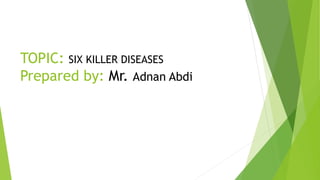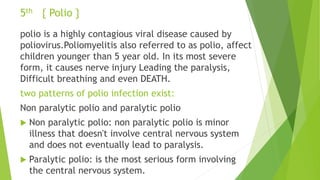This document discusses six killer diseases: tuberculosis, tetanus, measles, pertussis, polio, and diphtheria, detailing their causes, transmission methods, symptoms, prevention strategies, and treatments. Each disease is explained with an emphasis on how they spread, their respective vaccines, and available treatments or supportive care. The information underscores the importance of vaccination and early intervention in managing these serious health threats.































